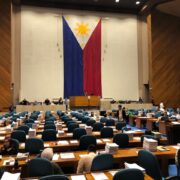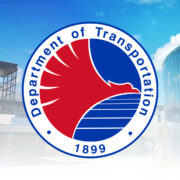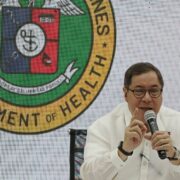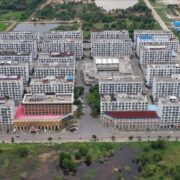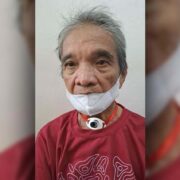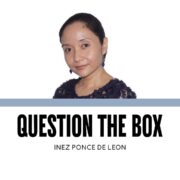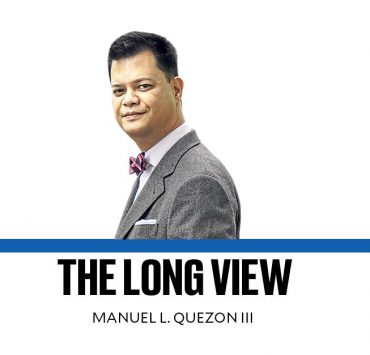Economic gains, uneven lives

One in two or 50 percent of families rated themselves poor, according to an April 23-28, 2025 survey conducted by the Social Weather Stations (SWS) among household heads across the country. Those who said they were not poor comprised 42 percent of respondents, while 8 percent said they were borderline poor/not poor. Self-rated poverty was highest in the Visayas at 67 percent. Mindanao came second at 61 percent, Balance Luzon at 43 percent, and Metro Manila at 33 percent.
Earlier in the month, or on April 11-15, 2025, the percentage of self-rated poor families was at 55 percent, from 52 percent in March, 51 percent in February, and 50 percent in January.
A record-high 42 percent of respondents rated themselves not poor in the said period, topping the previous record of 36 percent in March 2025. The percentage of those who said they were “not poor” increased in all areas, rising by 15 points in Metro Manila (45 percent to 60 percent), 13 points in Mindanao (16 percent to 29 percent), 7 points in Balance Luzon (44 percent to 51 percent), and 3 points in the Visayas (21 percent to 24 percent).
These findings highlight positive developments in poverty reduction and economic well-being in the Philippines this year. They also jibe with the Philippine Statistics Authority’s figures that say gross domestic product grew by 5.4 percent in the first quarter of this year, well within targets, and that headline inflation further slowed to 1.3 percent in May 2025 from 1.4 percent in April.
Still, much work needs to be done. A Pulse Asia Research, Inc. survey conducted in April 2025 showed that 70 percent of Filipinos remain highly concerned about controlling inflation and identified this issue as their most urgent national concern.
Meanwhile, 34 percent cited increasing the pay of workers and 26 percent are concerned about creating more jobs. PSA figures say unemployment rose to 4.1 percent—2.06 million individuals—in April 2025 from 3.9 percent in March. Underemployment also went up to 14.6 percent. Amid these, the SWS reported that self-rated joblessness climbed to 41.7 percent in March before easing slightly to 38.6 percent in April—figures significantly higher than those reported by the PSA. This discrepancy suggests that labor market difficulties may be deeper and more widespread than reflected in official statistics.
—————-
The issue of poverty in the Philippines is not felt just by the individual. It is, instead, a family experience—from the parents to the children—being deprived of basic needs in the present and not being secure about how to survive in the immediate future.
While the Marcos Jr. administration has done many things to alleviate poverty and address the people’s economic concerns, it needs to calibrate its efforts in terms of focus and inclusion. The socioeconomic challenges that we face are interconnected, such that equitable access to resources and sustainable development for Filipino families must be the goal.
To do this, government efforts alone are not enough. Collaboration with the private sector and with civil society is a far better approach because these sectors bring to the table their own unique perspective and expertise in understanding the human condition.
The collaborative approach must be applied in finding lasting solutions to economic issues that hound the Filipino family. And just as different sectors must be tapped in finding solutions, various perspectives must also be taken to see the issues from different vantage points.
For example, adopting a governance perspective will allow officials to leverage self-rated poverty data to design realistic, family-centered programs for sustainable growth and inclusive development. A social protection system view expands social safety nets in empowering vulnerable families and narrowing poverty gaps.
An economic and labor market perspective tackles unemployment and underemployment by fostering job creation and improving labor market conditions, including efforts to raise workers’ pay and improve the income stability of families. Strategic planning and data-driven approaches bank on hard data to align programs with families’ needs and to improve access to essential services like transportation and telecommunication.
Collaboration with civil society and grassroots organizations will allow for stronger community-based programs to address cost-of-living challenges on the local level. Finally, issue-based action and advocacy will enable targeted programs to combat food insecurity and reduce regional disparities.
The challenges faced by the Filipino family can never be addressed by a single stroke. The government must acknowledge the nuances of each issue as seen through multiple perspectives. Ultimately, Filipino families will rise and fall with the economic and sociopolitical decisions made on their behalf and for their benefit.
—————-
Dindo Manhit is the founder and CEO of Stratbase Group.




